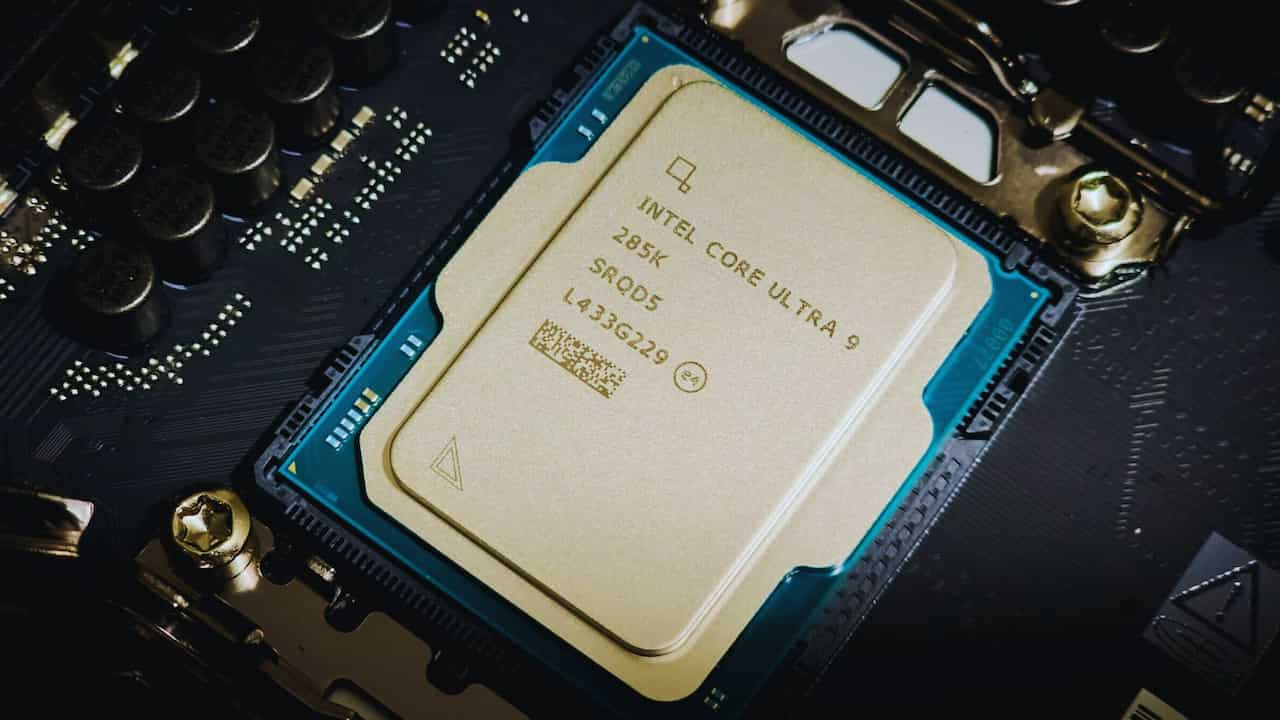Intel’s New Arrow Lake CPUs: Power Efficiency Gains Come at Gaming Cost
Intel has launched its latest desktop processor lineup, the Core Ultra 200S series (Arrow Lake), marking a significant shift in the company’s approach to CPU design.
While delivering impressive power efficiency improvements, the flagship Core Ultra 9 285K surprisingly falls short in gaming performance compared to its predecessors.
Key Findings at a Glance
The $589 Core Ultra 9 285K brings about several groundbreaking changes.
- The first mainstream desktop CPU uses components entirely manufactured by TSMC.
- The new chiplet-based design utilizes 3D Foveros packaging.
- Removal of hyperthreading across all models
- Significant power efficiency gains match AMD’s Zen 5
- Unexpected regression in gaming performance
Performance Trade-offs
Surprisingly, the performance of Intel’s new flagship processor is inconsistent. While matching or slightly exceeding the Core i9-14900K and AMD Ryzen 9 9950X in CPU benchmarks, the gaming performance tells a different story. The Core Ultra 9 285K struggles to keep pace with both previous-generation Intel chips and AMD’s Zen 5 processors across all gaming resolutions.
Technical Innovations
The Arrow Lake architecture brings several notable improvements:
- The compute tile utilizes the advanced TSMC N3B process.
- The new memory supports DDR5-6400 CUDIMM technology.
- Built-in AI acceleration engine
- Redesigned core layout with distributed E-cores
- Despite lower boost clocks, base clock speeds have increased.
Power Efficiency Breakthrough
One of the most significant achievements is power consumption. The new design delivers:
- The system can reduce power by up to 150W during gaming.
- The package power consumption is 40% lower in normal workloads.
- The efficiency levels are comparable to AMD’s renowned Zen 5 processors.
- More relaxed cooling requirements
The Cost of Progress
Users considering an upgrade should weigh several factors:
- The $589 price tag matches the previous generation.
- We need to invest in new motherboards from the 800 Series.
- Mandatory DDR5 memory upgrade
- Uncertain socket longevity
- Gaming performance limitations
Market Impact
The timing of this release is particularly interesting, coming shortly after AMD’s Zen 5 Ryzen 9000 launch. While Intel has made impressive strides in power efficiency, the regression in gaming performance presents an opportunity for AMD’s upcoming Ryzen 9000X3D processors to potentially dominate the gaming segment.
Looking Forward
Intel’s bold move to prioritize efficiency over raw gaming performance signals a significant shift in desktop CPU design philosophy. While some users may be disappointed by the gaming performance, the improvements in power efficiency and general computing tasks suggest a more balanced approach to processor design.
Expert Verdict
The Core Ultra 9 (285K) represents a technological achievement in terms of power efficiency and general computing performance. However, its gaming limitations and platform costs make it a complex choice for potential buyers. Users focused on gaming might want to consider alternatives like the discounted Core i9-14900K or wait for AMD’s upcoming X3D processors.
Pros:
- Outstanding power efficiency
- Strong single- and multi-core performance
- Advanced packaging technology
- Significant reduction in power consumption
- CUDIMM memory support
Cons:
- Disappointing gaming performance
- Premium pricing
- Platform upgrade requirements
- Uncertain socket future
- Higher memory latency
The launch of Arrow Lake marks a pivotal moment in desktop CPU evolution, prioritizing efficiency over raw gaming power. While this may not please all users, it represents an important step toward more sustainable high-performance computing.
Table of Contents
